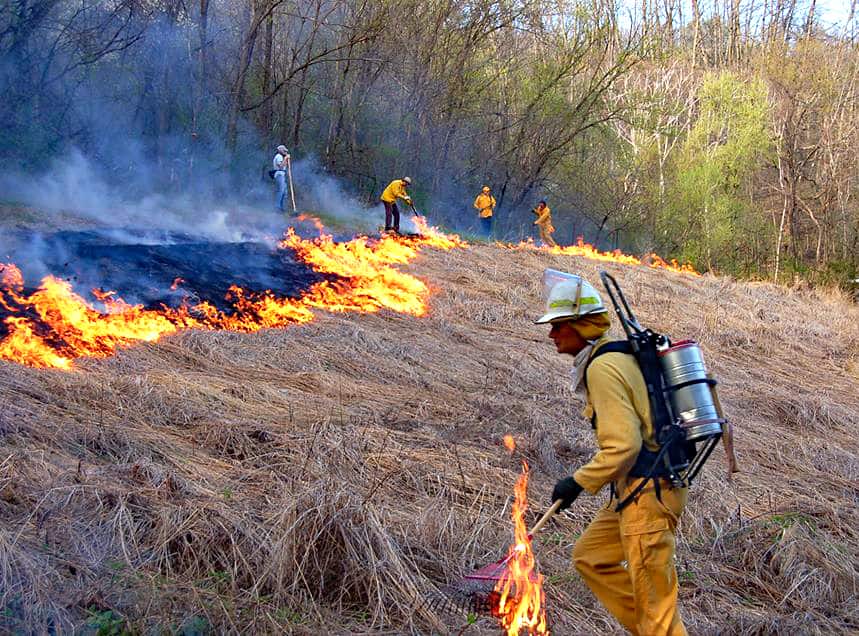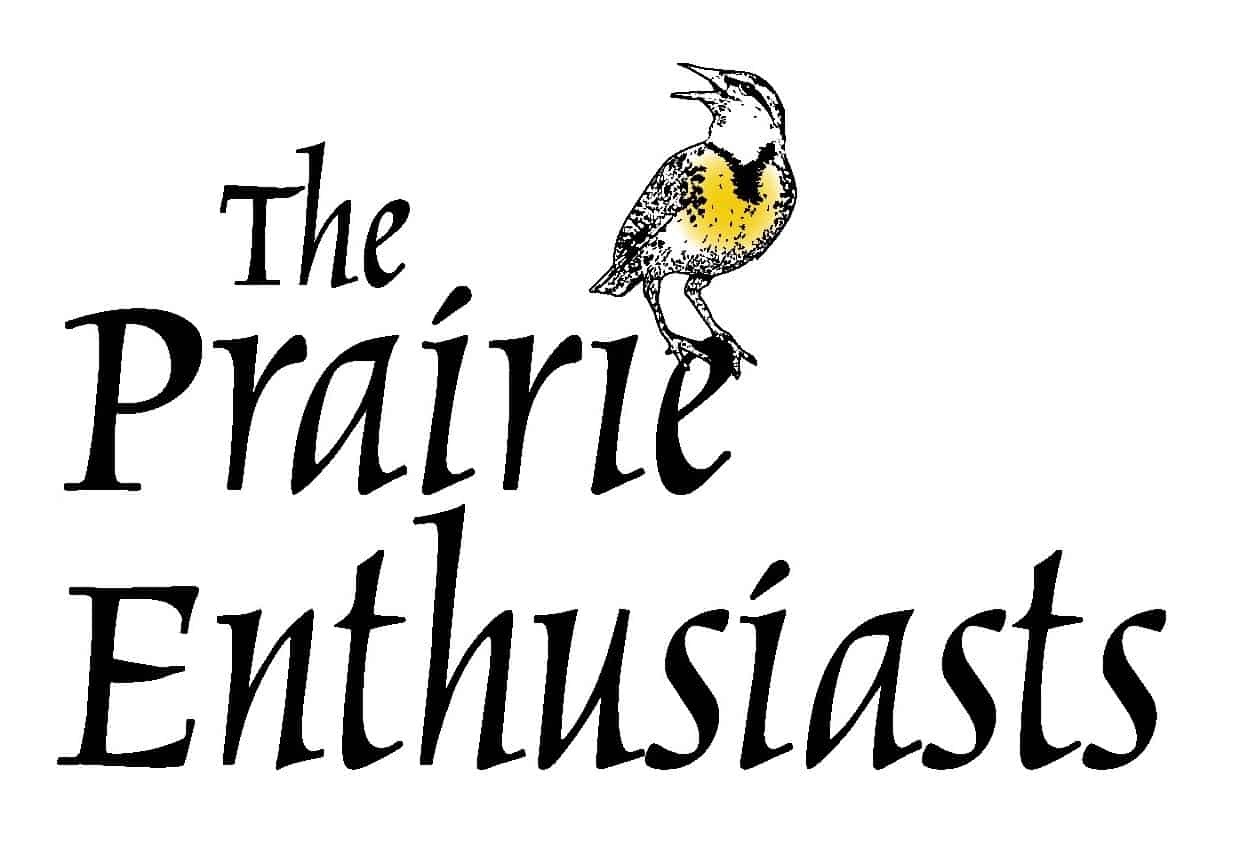The 2020 TPE burn season was dramatically shortened but was not a complete bust. Just as the season was getting underway the COVID-19 outbreak hit, with stay-at-home orders issued in late March for Illinois, Wisconsin and Minnesota. State, county and local authorities also issued burn bans in some places, and TPE made a recommendation to stop burning with volunteer crews on March 24.
Everyone in TPE understands that getting regular fire back onto the land is one of the most important things we do to help the natural communities in our care. We have also been planning, preparing and looking forward to getting together for this annual task, so the shutdown of the season was a huge disappointment for all of us. We reached out to all the chapters to find out what they had been able to accomplish this year.
Prescribed fire conducted in March 2020 by the Coulee Region Chapter. Photo by Stephen Winter

In the southern chapters, the season got underway around March 21. Several chapters (Empire-Sauk, Prairie Bluff, Coulee Region, and Minnesota Driftless) were able to get a small number of burns in each before the shutdown. The season starts considerably later for the more northern chapters, who were not able to get anything done. St. Croix Valley worked on burn breaks on March 21 with the intention of getting at least a few burns in right away but had a significant snowfall on March 22. By the time things melted, the ban was in place.
Ecologically, it is usually not important to get an established prairie or savanna burned in any particular year. However, as several people pointed out, when seeds were sown into established cool season grasses the previous fall or winter (so-called “inter-seeding”), it is important to burn the following spring to give the seeds an opening in which to successfully germinate and grow. Inter-seeding is becoming a common tactic for expanding remnants on many sites, and the potential loss of those seeds in terms of cost and/or volunteer time is a big one. Several people reported that this year they focused intensely on getting as many inter-seeded units burned as they could.
Burning has not completely stopped in all places. The Wisconsin Prescribed Fire Council is looking into getting permission to allow small professional crews to be able to burn smaller sites. Some property owners are also managing to continue. Mike Mossman, the noted naturalist and an Empire-Sauk Chapter member in Sauk County, WI wrote “We’re fortunate here at Stumphenge (his family property) to have a family of three that works well as a team, and with a little extra time on our hands. We’ll continue to burn patches of our property nightly, I think, in suitable pieces, perhaps until we get everything done that we want. It goes slow, with all the needed burn-breaks, but its working so far and we’re honing our team skills. Another advantage of this is that we are working at a scale where we can coddle oak plantings where we are converting some of the prairie to savanna, and can also incorporate plenty of refugia, like for Sedge Wren and perhaps for Sandhill Crane and American Woodcock nests, and who-knows-what-other species.”
We all remain hopeful that we will be able to get back out there in the fall, and certainly in the spring of 2021!

